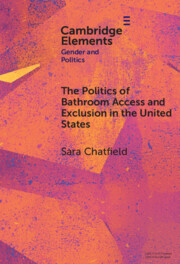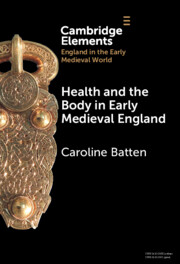520 results
4 - Disability: issues for primary care nurses
- from Part II - Diverse communities
-
-
- Book:
- An Introduction to Community and Primary Health Care
- Published online:
- 27 March 2025
- Print publication:
- 20 March 2025, pp 52-69
-
- Chapter
- Export citation
DOMITIAN: OF POLIO, LITTERS, ARCHERY, AND FLIES
-
- Journal:
- Greece & Rome / Volume 72 / Issue 1 / April 2025
- Published online by Cambridge University Press:
- 18 March 2025, pp. 1-9
- Print publication:
- April 2025
-
- Article
- Export citation
Vulnerable Populations Under COVID-19 in Japan: A Lull in the Storm?
-
- Journal:
- Asia-Pacific Journal / Volume 18 / Issue 18 / September 2020
- Published online by Cambridge University Press:
- 14 March 2025, e12
-
- Article
- Export citation
The Coronavirus Crisis: Disability Politics and Activism in Contemporary Japan
-
- Journal:
- Asia-Pacific Journal / Volume 18 / Issue 18 / September 2020
- Published online by Cambridge University Press:
- 14 March 2025, e2
-
- Article
- Export citation
Suffering and Intellectual (Dis)Ability
-
- Journal:
- Cambridge Quarterly of Healthcare Ethics , First View
- Published online by Cambridge University Press:
- 10 March 2025, pp. 1-8
-
- Article
-
- You have access
- Open access
- HTML
- Export citation

Autistics in Academia
- Narratives of Work, Adversity, and Achievement from Around the World
-
- Published online:
- 06 March 2025
- Print publication:
- 13 March 2025
When Disability and Music Met Maker Culture: The Long(er) History of Accessible Music Notation
-
- Journal:
- Eighteenth-Century Music / Volume 22 / Issue 1 / March 2025
- Published online by Cambridge University Press:
- 05 March 2025, pp. 5-13
- Print publication:
- March 2025
-
- Article
-
- You have access
- HTML
- Export citation
Impact of co-morbid common mental disorder symptoms in people with epilepsy in Ethiopia on quality of life and functional disability: a cohort study
-
- Journal:
- Cambridge Prisms: Global Mental Health / Volume 12 / 2025
- Published online by Cambridge University Press:
- 26 February 2025, e33
-
- Article
-
- You have access
- Open access
- HTML
- Export citation

The New Nineteenth-Century American Literary Studies
-
- Published online:
- 02 January 2025
- Print publication:
- 23 January 2025
Manufacturing Martha’s Madness: Enslavement, Anxiety, and Distraction in Luke 10:38–42
-
- Journal:
- Harvard Theological Review / Volume 118 / Issue 1 / January 2025
- Published online by Cambridge University Press:
- 10 March 2025, pp. 19-40
- Print publication:
- January 2025
-
- Article
- Export citation
Chapter 2 - History Taking and Clinical Examination
- from Part I - Evaluation and Treatment of Patients with a Neuromuscular Disorder
-
- Book:
- Neuromuscular Disease
- Published online:
- 29 November 2024
- Print publication:
- 19 December 2024, pp 5-14
-
- Chapter
- Export citation

Embodiment, Dependence, and God
-
- Published online:
- 15 December 2024
- Print publication:
- 19 December 2024
-
- Element
- Export citation
Resources for whom? Conceptualizing and comparing childcare policy design for parents of children with additional or complex care needs
-
- Journal:
- Journal of International and Comparative Social Policy , FirstView
- Published online by Cambridge University Press:
- 10 December 2024, pp. 1-16
-
- Article
-
- You have access
- Open access
- HTML
- Export citation

The Politics of Bathroom Access and Exclusion in the United States
-
- Published online:
- 05 December 2024
- Print publication:
- 05 December 2024
-
- Element
- Export citation
Portable Accessible MRI in Dementia Research: Ethical Considerations About Research Representation and Dementia-Friendly Technology
-
- Journal:
- Journal of Law, Medicine & Ethics / Volume 52 / Issue 4 / Winter 2024
- Published online by Cambridge University Press:
- 31 January 2025, pp. 830-839
- Print publication:
- Winter 2024
-
- Article
-
- You have access
- Open access
- HTML
- Export citation
Organisational outputs of administrative reforms: disability in Danish job centres
-
- Journal:
- Journal of Social Policy , First View
- Published online by Cambridge University Press:
- 29 November 2024, pp. 1-18
-
- Article
-
- You have access
- HTML
- Export citation
Chapter 6 - Disability and Race
-
-
- Book:
- The Cambridge Companion to Romanticism and Race
- Published online:
- 21 November 2024
- Print publication:
- 28 November 2024, pp 98-115
-
- Chapter
- Export citation
P3: Physical-Frailty as impairment of the functional status in older people after a COVID-19 outbreak: Descriptive Study in a Long-Stay Facility in Chile
-
- Journal:
- International Psychogeriatrics / Volume 36 / Issue S1 / September 2024
- Published online by Cambridge University Press:
- 27 November 2024, p. 118
-
- Article
-
- You have access
- Export citation

Health and the Body in Early Medieval England
-
- Published online:
- 23 November 2024
- Print publication:
- 12 December 2024
-
- Element
- Export citation
Chapter 3 - Gregorios Antiochos
-
- Book:
- Masculinity in Byzantium, c. 1000–1200
- Published online:
- 07 November 2024
- Print publication:
- 21 November 2024, pp 73-102
-
- Chapter
- Export citation


